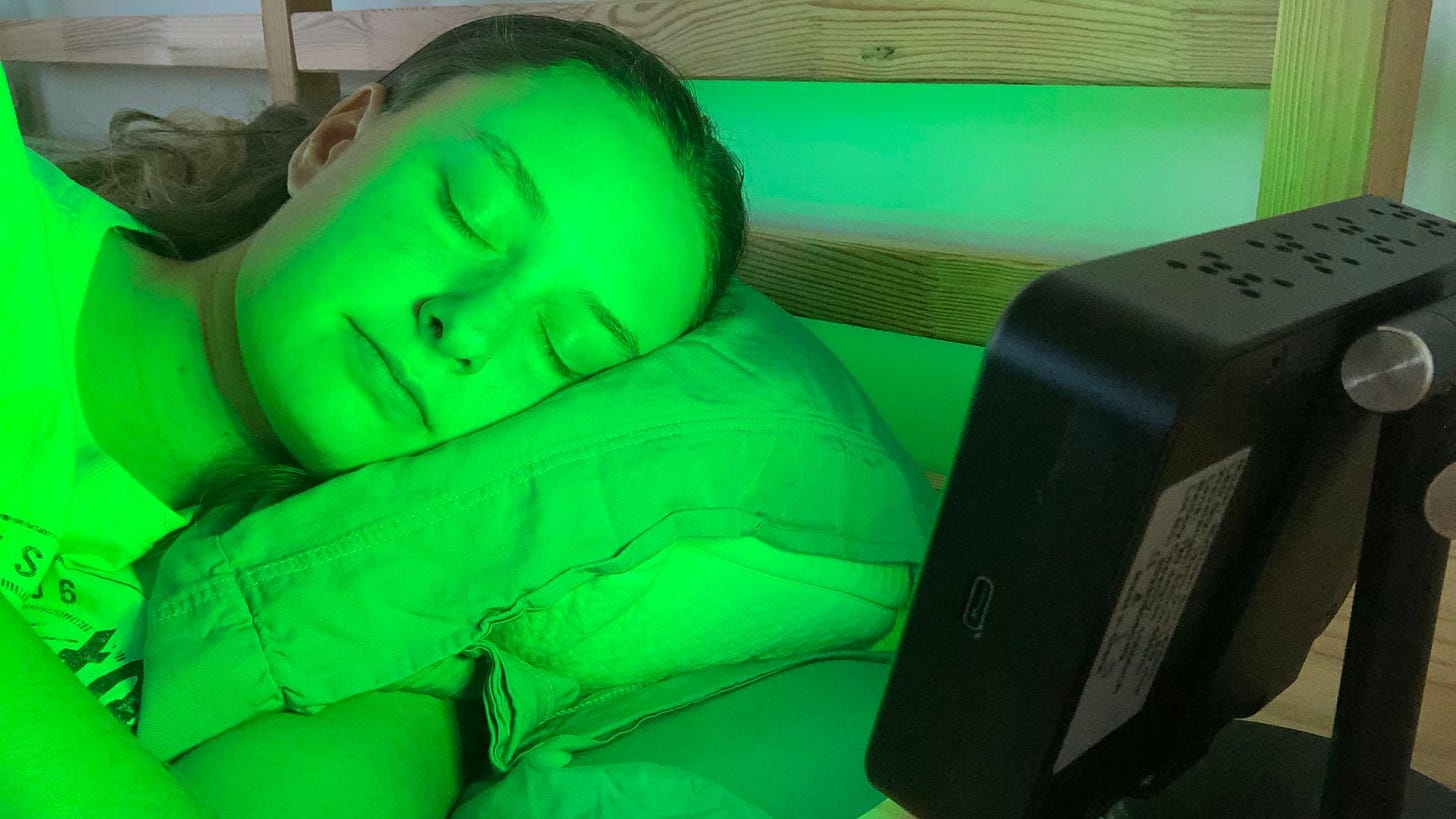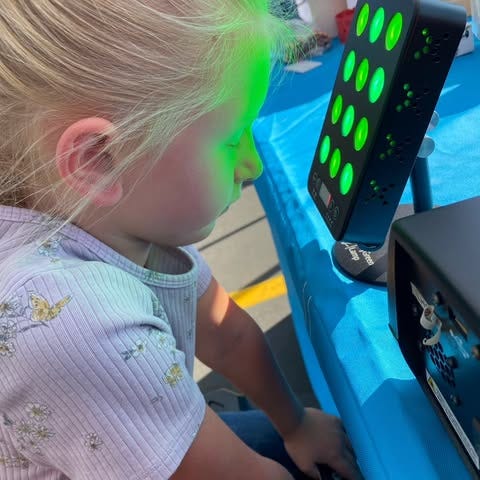Natural headache pain relief
My oldest daughter called to say she was experiencing visual disturbances & nausea.
She was scared.
I told her those symptoms reminded me of a migraine progression & that she'd likely soon experience acute headache pain.
Except... my daughter has a MyGreen Lamp.
She went to bed, closed her eyes, & let the green light shine on her face. All the other symptoms of migraine progressed, but the pain never came.
She was able to sleep for hours, until the episode finally passed. This is the same pattern I've noticed again & again among migraineurs who get no relief from drugs, or cold therapy, or electrolytes.
This is a pattern that has been reliably been repeated in several patients, under clinical supervision.
Migraine is a big economic problem
Migraine affects more than 14% of the global population. It is one of the few disabling afflictions that is more prevalent among young adults than old. For example, in a 2018 US Health Interview survey (CDC MMWR QuickStats 2020), more than 25% of 18 to 44-year-olds reported experiencing migraine or severe headache during the previous three months – about three times the rate reported by those older than 75.
Young women are particularly affected, reporting twice the frequency of migraines as young men.
Limited treatment options for migraine pain
The most frequently prescribed pharmaceutical treatments for migraines include powerful triptans and ergot alkaloids. Both work by causing the blood vessels to constrict and result in their own disconcerting neurological side effects (Dodick, 2004). The chest pain, dizziness, drowsiness, muscle aches, numbness, sweating, and nausea common to these drugs often result in patients having to trade one set of uncomfortable symptoms for another, all with no guarantee of relief. For that reason, when they do turn to medication to treat their symptoms, many migraineurs gravitate toward comparatively mild over-the-counter non-steroidal anti-inflammatory drugs (NSAIDs) like Excedrin (Befus 2019).
Still, migraineurs prefer to eschew pharmaceuticals altogether – and it’s no wonder. Over-the-counter NSAIDs do not cure the underlying conditions and instead carry their own perhaps less acutely uncomfortable and ultimately serious side effects, including stomach pain and distress, gastrointestinal ulcers, and, in extreme cases, internal bleeding requiring hospitalization and additional treatments (Davis 2016).
The extent of the suffering and the shortcomings of available treatment options are what make no-pharmaceutical options so important. Still, bringing practical treatment options to patients remains a challenge.
Moving migraine relief from the lab into the home
A recent study at the University of Arizona addressed key drawbacks with lab-based green light treatment protocol that allowed patients to self-administer the treatment at home (Martin 2021). Without having study participants modify any pre-existing medications, the Arizona scientists equipped 29 migraine patients with a customized green LED party light strip to use at home. They asked the participants to sit in an otherwise completely dark room for 1-2 hours, illuminated only by the green LED strip. The participants were free to occupy themselves by listening to music or reading a book (hardcopy – not on a screen) while undergoing the green light migraine therapy, although they were not permitted any other light sources and were not to stare directly at the green light.
They achieved remarkable results.
Participants reported a 60% reduction in the frequency of headaches during the study period, dropping from more than 22 headache days per month to fewer than 10 among chronic suffers, and from eight headache days per month to less than three among episodic suffers. More importantly, patients reported significant improvements in quality of life and reductions in pain without adverse side effects.
At-home green light therapy achieved significant reductions in the frequency and severity of migraine headaches.
At the conclusion of the study, all but one of the study participants asked the research team if they could keep the green light device so that they could continue self-administering the migraine therapy at home. It’s hard to imagine a more compelling endorsement for green light headache therapy.
Invention of MyGreen Lamp
The problem with most commercially available green phototherapy devices is that they were developed to duplicate the lab-based protocols in the research studies. As such, they’re underpowered and inflexible. That is, they don’t put out more than one wavelength of green, and they’re underpowered.
Instead of following the research protocols, I had a new green light prototype built by modifying a typical hand-held red light device to carry green LEDs instead. When the prototype arrive, it was so powerful that I was afraid I’d failed.
However, a woman I was with who suffers from frequent headaches took the prototype out of my hands.
“Give me that thing,” she said.
She closed her eyes, and put the green light right up against her face on full blast. Her pain relief was instantaneous.
“This feels really good,” she told me. “It takes my headache down from an 8 to about a 2.”
MyGreen Lamp was born.
The principal advantage of the new design is that:
The increased power means you don’t have to sit in the dark. You can block all other wavelengths simply by shutting your eyes.
It acts fast. Most patients report some immediate relief, and many say that after one or two sessions of just ten minutes each, they get complete relief from migraine pain.
Where to get green light therapy devices for migraine pain?
There are only a few clinics in the US and Canada that offer green phototherapy for migraine pain. The best way to obtain pain relief from narrowband green LED light is to purchase a device for home use, and the best place to do that is the MyGreen website, at https://www.mygreenlamp.com/





Have you investigated syntonics? I had never heard of it until listening to a Jacob Liberman OD book. It has been used for 80 years. Very interesting!